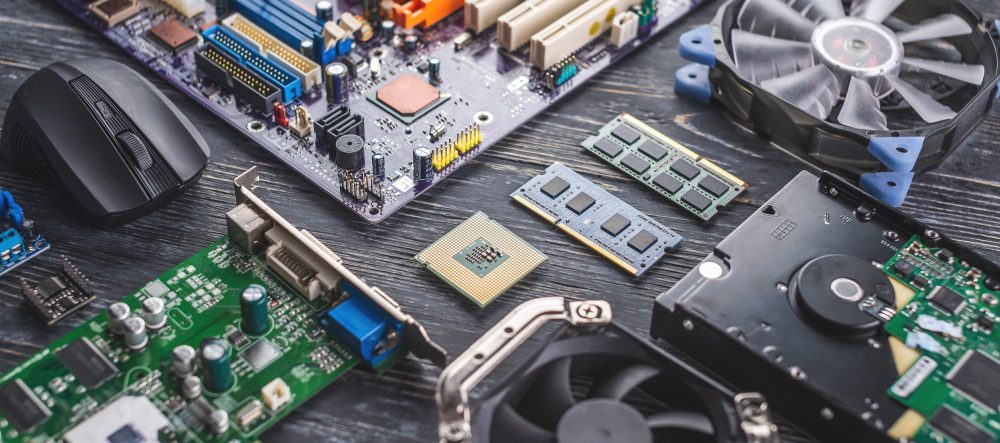How to Check Your Motherboard Health
Motherboard health is important as it is the backbone of your computer system. Without a properly functioning motherboard, your computer may not work as intended or not work at all. Checking your motherboard’s health regularly can help you spot any issues before they become major problems. In this article, we will discuss how to check your motherboard health.
Check the System Information
The easiest way to check your motherboard’s health is to go to the system information. On Windows, you can go to the Control Panel, click on System and Security, and then click on System. Here, you will see the basic information about your system, including the motherboard model, manufacturer, and BIOS version.
On Mac, you can go to the Apple menu, click on About This Mac, and then click on System Report. Here, you will see the hardware information, including the motherboard model and manufacturer.
Check the BIOS
The BIOS (basic input/output system) is the firmware that runs on your motherboard and controls how your computer boots up and operates. Checking the BIOS can give you an idea of your motherboard’s health.
To check the BIOS on a Windows computer, restart your computer and press the key that appears on the screen to enter the BIOS setup utility. This key varies depending on the computer manufacturer but is usually F2, F10, or Delete. Once you’re in the BIOS, you can check the system temperature, fan speed, and voltages.
On a Mac, you can access the EFI (extensible firmware interface) by holding down the Option key while starting up your Mac. Once you’re in the EFI, you can check the system temperature, fan speed, and voltages.
Use Diagnostic Tools
There are many diagnostic tools available that can help you check your motherboard’s health. These tools can scan your system for hardware issues, including problems with your motherboard. Some popular diagnostic tools include CPU-Z, HWMonitor, and AIDA64.
CPU-Z is a free tool that provides detailed information about your computer’s hardware, including the motherboard model, chipset, and BIOS version. HWMonitor is a hardware monitoring tool that can display the CPU temperature, fan speed, and voltages. AIDA64 is a comprehensive system diagnostic tool that can check your motherboard’s health, as well as other hardware components.
Check for Physical Damage
Physical damage to your motherboard can cause serious problems, including system crashes and hardware failures. Check your motherboard for any signs of physical damage, such as cracks, burns, or bulging capacitors. If you notice any physical damage, you may need to replace your motherboard.
How do I know if my motherboard is bad?
Diagnosing a bad motherboard can be a complex task because it’s often difficult to distinguish between a motherboard issue and other hardware problems. However, there are some signs and symptoms that can indicate a problem with the motherboard:
- System Does Not Power Up: If the system does not power on at all, it might be a motherboard problem. Check to make sure the power supply is functioning correctly first, as a faulty power supply could also cause this issue.
- Frequent Blue Screen of Death (BSOD): Frequent crashes, especially those involving the Blue Screen of Death in Windows, can be a sign of a motherboard problem.
- Random Restarts or Shutdowns: If your system restarts or shuts down randomly, it could be a sign of a motherboard issue.
- Peripherals Not Working: If peripherals (like keyboard, mouse, monitor, etc.) connected to the motherboard are not working or not being recognized, it could be a sign of a bad motherboard.
- Burning Smell or Visible Damage: A strong burning smell or visible signs of physical damage, such as leaking or bulging capacitors, could be signs of a motherboard failure.
- Error Codes/Beeps: Some motherboards use beep codes or LED light codes to indicate issues. If you’re hearing unusual beep patterns when starting up the computer, refer to your motherboard’s manual to understand what these beeps mean.
- Inconsistent System Behavior: If the system behaves erratically, sometimes booting, sometimes not, or if performance is inconsistent, this may be a sign of motherboard issues.
- Failed POST: If your system does not pass the Power-On Self Test (POST), it could be a sign of a motherboard problem. POST issues are often indicated by a series of beeps or an error message.
Remember, these symptoms can also indicate issues with other components of your system. Diagnosis can be difficult, and it’s often a process of elimination. Before concluding that a motherboard is faulty, it’s important to rule out issues with other components like the power supply, RAM, CPU, or peripherals. If you are not experienced in diagnosing and handling computer hardware, you may want to consult with a professional.
Conclusion
Checking your motherboard’s health regularly can help you spot any issues before they become major problems. By following the steps outlined in this article, you can check your motherboard’s health and ensure that your computer system is running smoothly. Remember to always handle your motherboard with care and avoid any physical damage.
A healthy motherboard is crucial for a well-functioning computer system.



